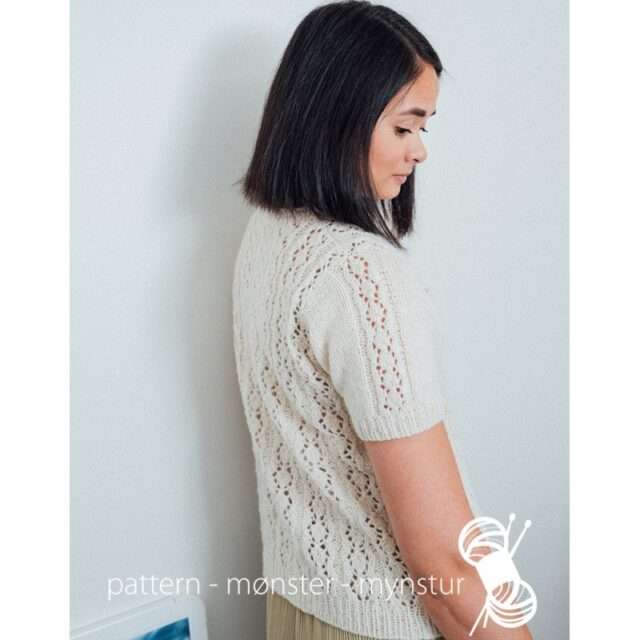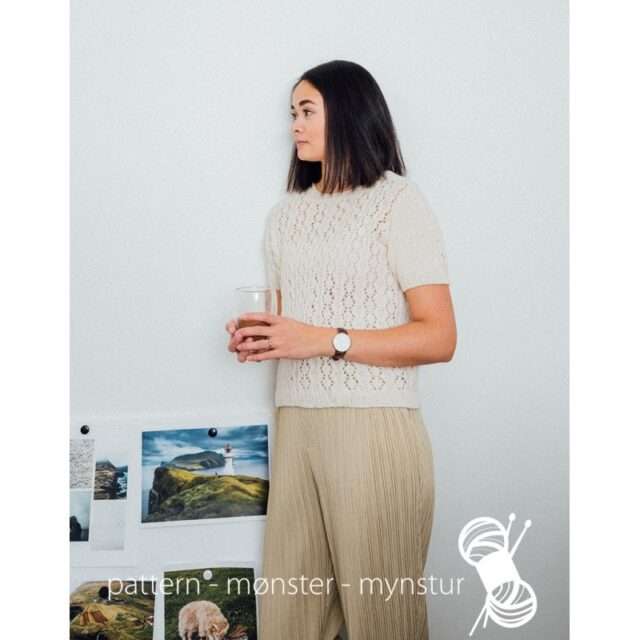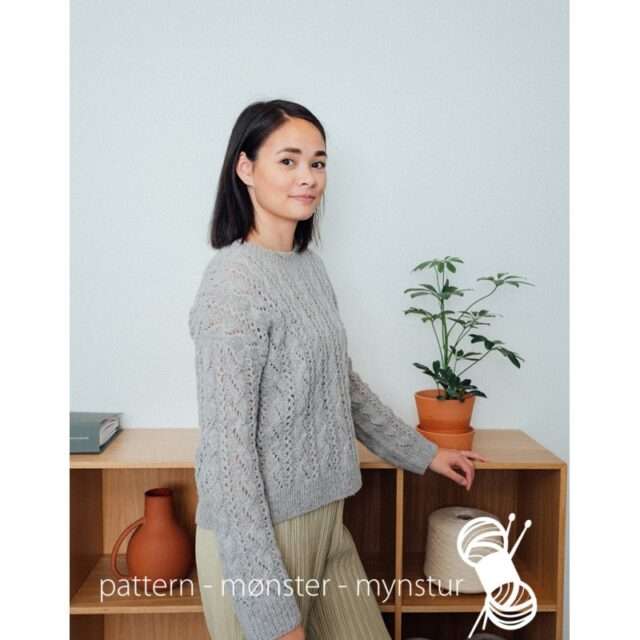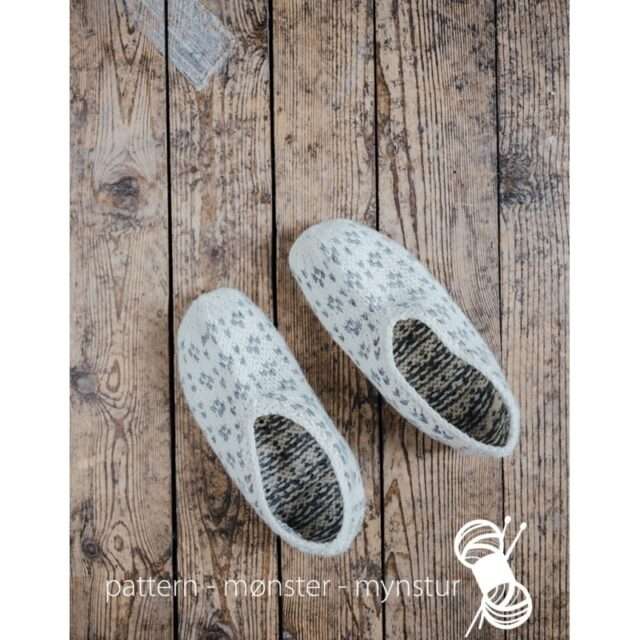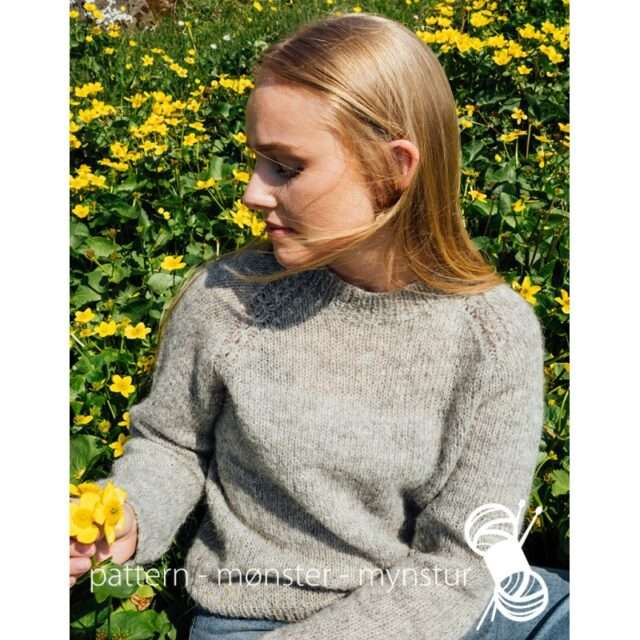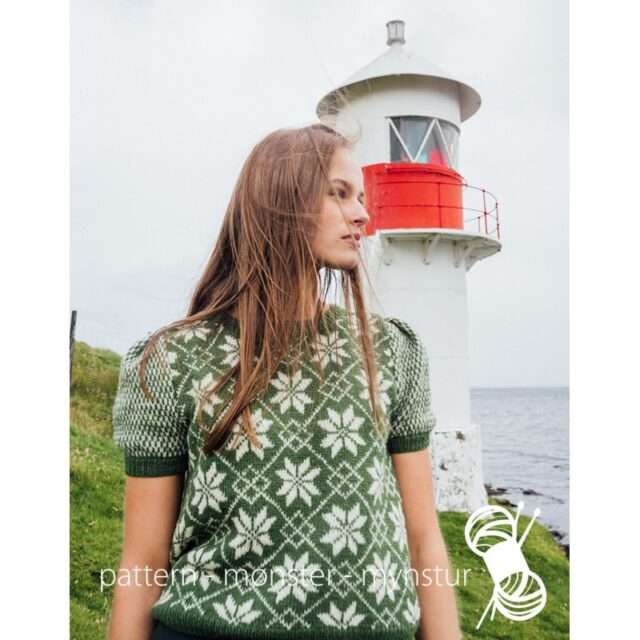Presented in Faroe Islands Culture Days, join us for a three-hour workshop led by renowned Faroese knitter Sára Mrdalo, the head knitter at Navia! This program will explore the rich tradition of Faroese knitting, teaching participants new techniques and different pattern-work such as lace, structure, cable knit, and two-colored patterns. Participants will work on five different projects and will learn the techniques to create five patterns in order to finish four featured sweaters as well as skóleistur, a shoe knitted from woolen yarn.
Two sessions of the program will be offered, one from 10 AM to 1 PM and one from 2 PM to 5 PM (each program includes a coffee break midway through). Basic knowledge is needed for the workshop, with cast-on, knit and purl competence; it is best-suited for basic knitters to advance knitters. Participants will need to bring their own materials, including 5 double-pointed needles U.S. size 6, as well as size 6 needles, and 2-3 skeins of yarn (see details below). Sessions will be limited to 20 attendees per session; please reserve early to guarantee attendance.
Workshop tickets also include complimentary admission to the Faroese Knitwear Showcase & Drop-In Knitting events on Saturday & Sunday, April 20-21.
PROJECTS
Skóleistur, is a shoe knitted from woolen yarn (sometimes used as the inner layer of a real shoe or used as a house shoe). Skóleistur is a very Faroese thing; they go far back in history and are still found in most households on the Faroe Islands today, even though they are not as vital part of the wardrobe as they used to be.
BLUSA VIÐ FØROYSKUM MYNSTRI, a blouse with Faroese pattern.
BLUSA VIÐ HOLMYNSTUR, blouse with lace pattern.
LJÓSAGRÁ TROYGGJA VIÐ STRUKTUR, light gray sweater with structure.
TROYGGJA VIÐ RAGLAN MYNSTUR, sweater.
MATERIALS NEEDED
Participants will need to bring:
5 double-pointed needles U.S. size 6, plus your favorite size 6 needles.
Two or three skeins of yarn suited for U.S. size 6 needles.
Color of the yarn:
-One should be a light color: white, cream, light grey, or other light colors. This is to see the structure in the knitting better.
-One should be a contrasting color. For the two-color pattern knit, it is preferred that the two colors are fairly contrasting, as it will make the pattern knitting easier, and the result will be more visible.
